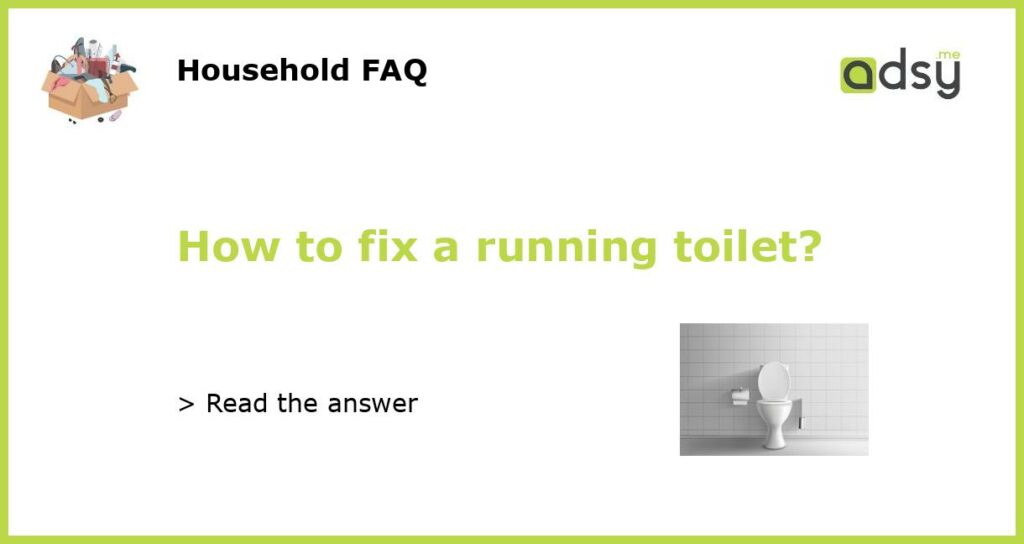Check the Toilet Tank
If you have a running toilet, the first step is to check the toilet tank. Remove the lid and inspect the water level. The water level should be about half an inch below the top of the overflow tube. If the water level is too high, adjust the float to lower the water level. The float is usually a ball or a cup-shaped plastic device attached to an arm. Gently bend the arm downward to lower the float, and thus the water level.
Check the Flapper
If the water level in the tank is not the problem, the next component to inspect is the flapper. The flapper is a rubber seal that sits at the bottom of the tank and is lifted when you flush the toilet. Over time, the flapper can wear out or become misaligned, causing water to continuously leak out of the tank into the bowl. To check the flapper, flush the toilet and observe if it fully seals the flush valve when the tank refills. If it doesn’t, you may need to adjust the positioning of the chain or replace the flapper entirely.
Check the Fill Valve
If adjusting the water level and replacing the flapper doesn’t solve the issue, it’s time to check the fill valve. The fill valve is responsible for refilling the tank after you flush. Sometimes, the fill valve can get stuck in the “on” position or become faulty, causing water to continuously flow into the tank. To identify if the fill valve is the problem, turn off the water supply to the toilet by closing the shut-off valve located on the water supply line. If the sound of running water stops, the fill valve may need to be repaired or replaced.
Check for Leaks
If none of the above fixes the running toilet issue, it’s crucial to inspect for leaks. Leaks can occur in various places, such as the flapper seat, overflow tube, or even the base of the toilet. One way to detect a leak is by adding food coloring to the tank. If the color appears in the bowl without flushing, it indicates a leak in the flapper or flush valve. A leak at the base of the toilet may require resealing or replacing the wax seal. Identifying and fixing leaks will help stop water wastage and prevent further damage to your toilet.
Call a Professional Plumber
If you’ve exhausted all the DIY troubleshooting steps and your toilet is still running, it may be time to call in a professional plumber. A trained plumber can diagnose and fix any underlying issues that may be causing your toilet to run. They have the expertise and tools necessary to repair or replace any faulty components and ensure your toilet is functioning properly. While it may involve an additional cost, hiring a professional plumber can save you time, effort, and potential frustration in trying to fix the problem yourself.






